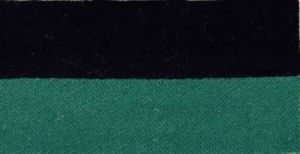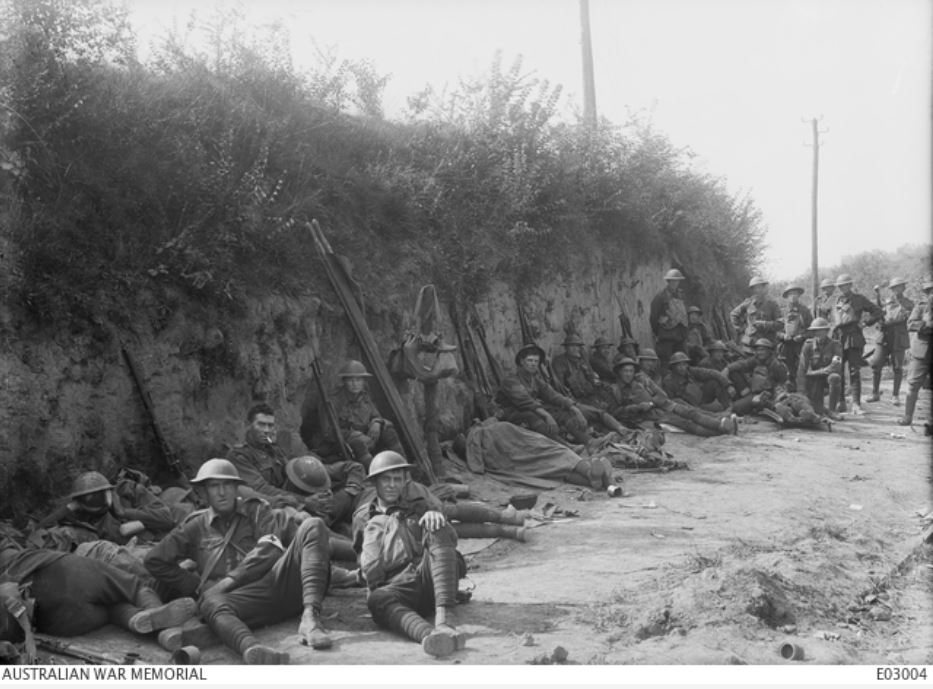Difference between revisions of "1st Battalion"
From Our Contribution
(Created page with "{{Infobox | name = 1st Battalion | title = 1st Battalion | above = | subheader = | image = border|300px...") |
|||
| Line 21: | Line 21: | ||
The battalion continued operations until late September 1918. The November armistice was followed by the peace treaty of Versailles signed on 28 June 1919. Between November 1918 and May 1919 the men of the 1st Battalion returned to Australia for demobilisation and discharge. | The battalion continued operations until late September 1918. The November armistice was followed by the peace treaty of Versailles signed on 28 June 1919. Between November 1918 and May 1919 the men of the 1st Battalion returned to Australia for demobilisation and discharge. | ||
| + | |||
| + | ===Battalion Personnel=== | ||
| + | * [[Alfred Warburton Chapman (Jnr)]] 5 Aug 1915 - 12 Dec 1918 | ||
Revision as of 23:15, 25 February 2021
 Shoulder patch | |
 23 Aug 1918. C Coy in newly captured railway cutting near Chuignes. AWM photo E03004 | |
Contents
Brief History
The 1st Battalion was the first infantry unit recruited for the AIF in New South Wales during the First World War.
The battalion was raised within a fortnight of the declaration of war in August 1914 and embarked just two months later. After a brief stop in Albany, Western Australia, the battalion proceeded to Egypt, arriving on 2 December. The battalion took part in the ANZAC landing on 25 April 1915 as part of the second and third waves, and served there until the evacuation in December. Its most notable engagement at Gallipoli was the battle of Lone Pine in August. Two members of the battalion, Captain A. J. Shout and Lieutenant L.M. Keysor were awarded Victoria Crosses for their valour at Lone Pine, Captain Shout posthumously.
After the withdrawal from Gallipoli in December 1915, the battalion returned to Egypt. In March 1916, it sailed for France and the Western Front. From then until 1918 the battalion took part in operations against the German Army, principally in the Somme Valley in France and around Ypres in Belgium. At Bullecourt in May 1917, Corporal G. J. Howell became the third member of the battalion to be awarded the Victoria Cross. The battalion participated in the battle of Amiens on 8 August 1918. This advance by British and empire troops was the greatest success in a single day on the Western Front.
The battalion continued operations until late September 1918. The November armistice was followed by the peace treaty of Versailles signed on 28 June 1919. Between November 1918 and May 1919 the men of the 1st Battalion returned to Australia for demobilisation and discharge.
Battalion Personnel
- Alfred Warburton Chapman (Jnr) 5 Aug 1915 - 12 Dec 1918
Battle Honours
- Anzac
- Landing at Anzac
- Defence of Anzac
- Suvla
- Sari Bair-Lone Pine
- Gallipoli, 1915
- Egypt, 1915-16
- Somme, 1916, '18
- Pozières
- Bullecourt
- Ypres, 1917
- Menin Road
- Polygon Wood
- Broodseinde
- Poelcappelle
- Passchendaele
- Lys
- Hazebrouck
- Amiens
- Albert, 1918 (Chuignes)
- Hindenburg Line
- Epéhy
- France and Flanders, 1916-18
Individual Honours
- 3 Victoria Crosses;
- 2 Companions of the Order of St Michael and St George;
- 4 Distinguished Service Orders + 1 bar;
- 28 Military Crosses + 1 bar;
- 18 Distinguished Conduct Medals;
- 94 Military Medals + 3 bars;
- 9 Meritorious Service Medals;
- 1 Member of the Order of the British Empire;
- 59 Mentions in Despatches; and
- 8 Foreign Awards
The totals for each of these awards varies from an entry in the AWM site, but matches the list of medals credited to the Battalion on their page.
Notes
Content for the history and honours sections has come from a combination of Wikipedia and the Australian War Memorial websites, primarily the later.